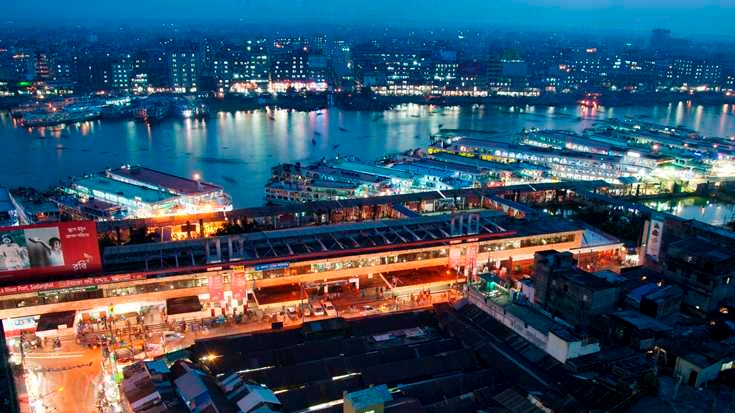Resilient Growth and Macroeconomic Stability
The Bangladesh Development Update April 2014 notes that economic activities recovered in the second half of FY14, driven by resilient exports and domestic demand, following setbacks suffered in the first half due to political uncertainty and turmoil.
A recovery in export growth and increases in public expenditure are likely to help achieve 5.4% GDP growth in FY14, slightly higher than the average for developing countries but lower than last year’s 6%. The political turmoil in the last quarter of 2013 inflicted a value-added loss of about $1.4 billion, of which 86% was in services, 11% in industry and the remaining 3% in agriculture.
Sound macroeconomic management helped contain inflation at a moderate single-digit level. Inflation has increased in recent months due to cost push from supply disruptions and wage increases. Stability in international commodity prices, weak domestic demand, and some appreciation of the nominal exchange rate combined with a restrained monetary policy to moderate the recent increase in inflation.
Foreign exchange reserves have increased to adequate levels, with a sustained large surplus in the overall balance of payments. The external current account surplus has remained comfortable due to good export growth and weak imports, which offset the decline in workers’ remittances.
The financial sector is stressed. A rise in default risk across the board due to losses inflicted by a prolonged disruption in production and trade has worsened the state of the banking sector. The state-owned banks were already negatively impacted by the earlier financial scams. The growing nonperforming loans of private commercial banks are also a matter of concern.
Prudent macroeconomic management continues. Monetary policy pursued a restrained path, achieving broadly the targets for the first half of FY14. Implementation of monetary policy benefited from slowdown in private credit growth, contributing to an increase in excess liquidity.
The fiscal deficit and public borrowing have remained within sustainable limits. Fiscal management this year is facing challenges because of a large and growing shortfall in NBR tax revenue, demand for fiscal support from sectors adversely affected by the political turmoil and slower utilization of ADP. Tax revenue growth in the first seven months of FY14 was barely 10 percent. Government bank borrowing so far has been contained, while net nonbank borrowing has increased.
Near and Medium-term Challenges
Key near-term challenges need prioritized attention. In the immediate future, Bangladesh faces three sets of formidable challenges: (i) maintaining stability and resolving the remaining political uncertainties while boosting investment in power and roads; (ii) managing well the transition in the readymade garment (RMG) industry; and (iii) stemming the decline in remittances.
The medium-term challenge is to boost productivity. The medium-term development challenges include re-invigorating structural reforms that boost supply capacity and productivity by investing in transformative infrastructure, energy and streamlining trade and investment regulations. Growth in Bangladesh may rise to a potential 6.5% within a couple of years if stability prevails.
The external balance cannot be taken for granted. The sustainability of the external balance will depend on addressing garments and remittance related challenges. As the RMG industry upgrades both factory and labor standards, export growth will likely recover after moderating in FY15. Remittances are expected to normalize from FY15, assuming improved demand for Bangladeshi labor with the relaxation of restrictions in Saudi Arabia, UAE and Kuwait, made possible by intensified economic diplomacy.
How Can Bangladesh Raise Growth Rate to 8%?
Macroeconomic stability must continue and investment-oriented reforms need a new lease of life. Confidence and economic activity will improve in the near- and medium-term if stability is sustained. Growth and poverty reduction efforts will accelerate if public investment in infrastructure is enhanced, the demographic dividend is harnessed, human capital accumulation fostered, and the climate for domestic and foreign private investment revamped through structural reforms.
The growth rate can be raised to 8% quickly. Overall, the Bangladesh economy did well in the outgoing fiscal year, considering the large costs of political turmoil. The near- and medium-term outlook is favorable because of the recovery in Bangladesh’s key trading partners and the restoration of internal stability. A rise in public investment in transformative infrastructure will be critical to boosting private investment and capacity creation.

